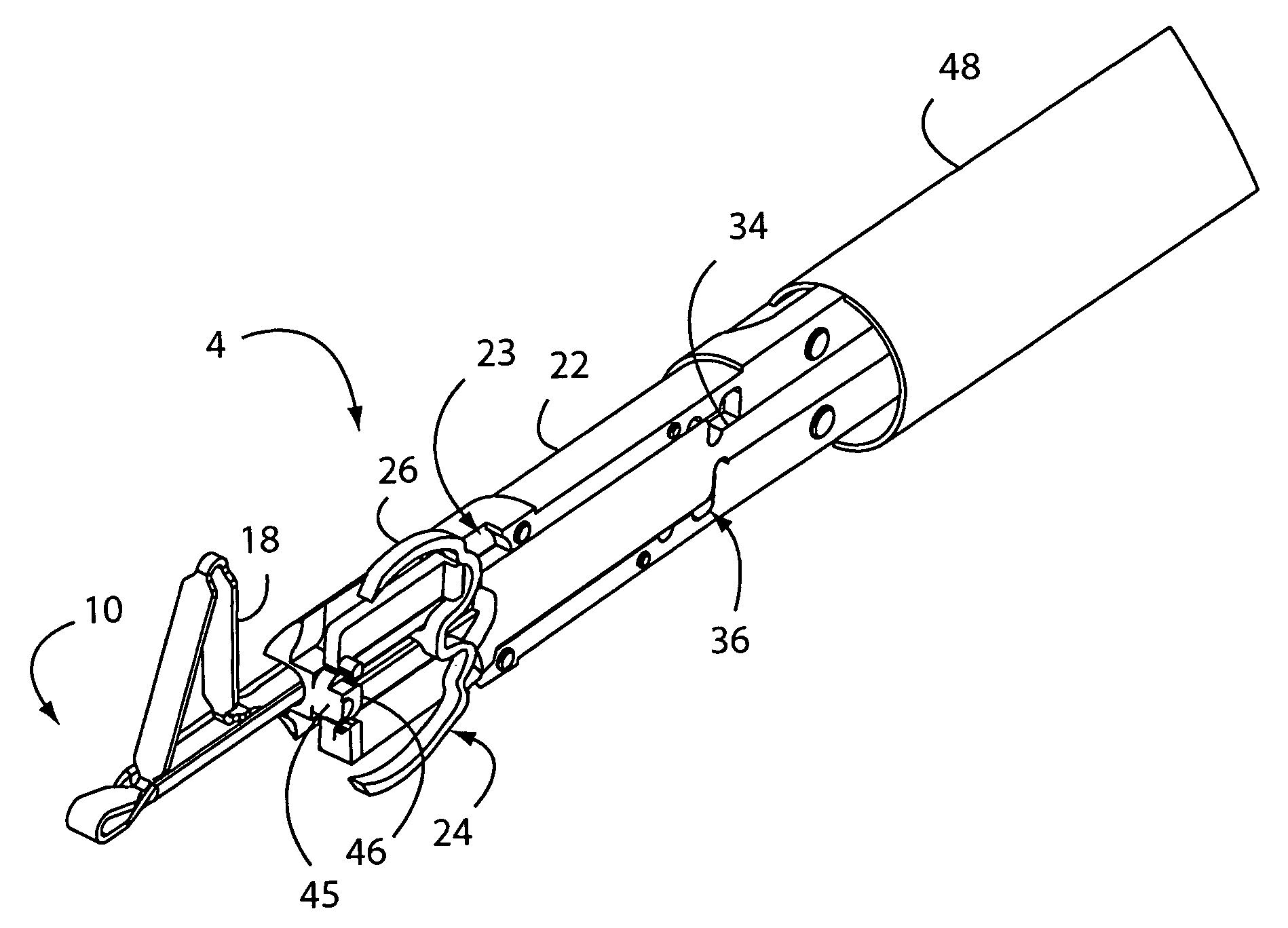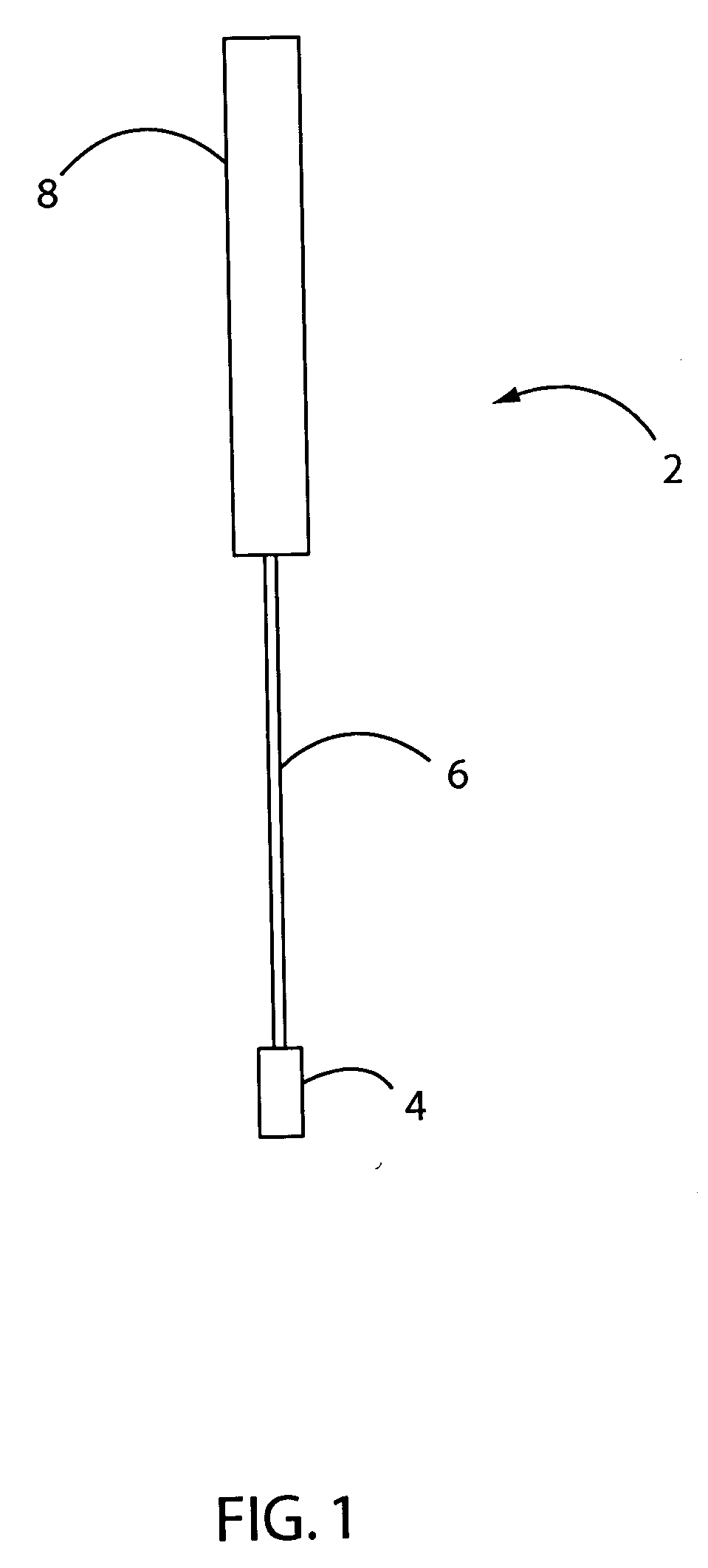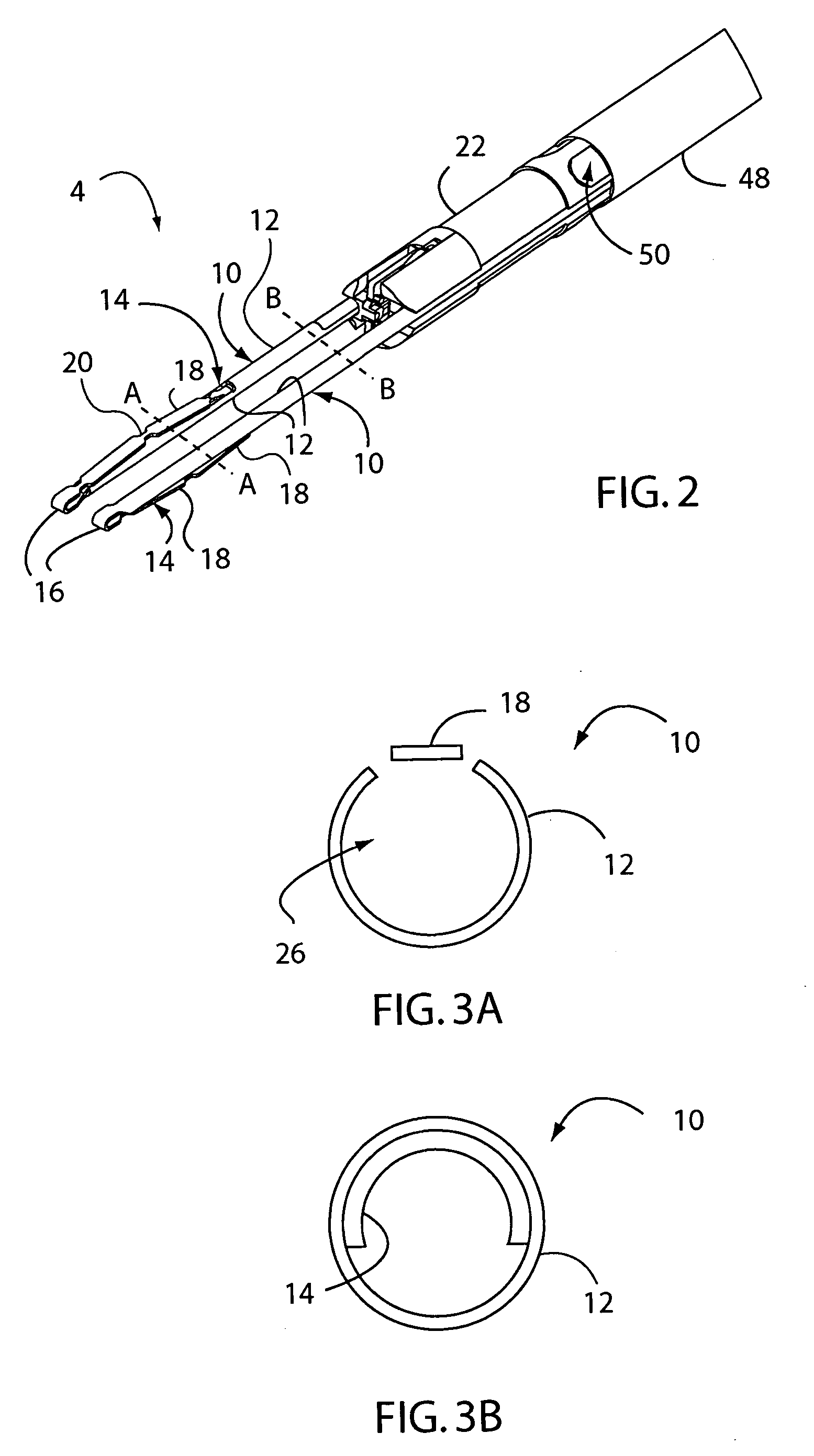Vascular closure system
a technology of vascular closure and closure plate, which is applied in the field of vascular closure plate, can solve the problems of complicated use, more unpleasant procedures, and resultant bruising and pain, and the limited acceptance of these devices and techniques
- Summary
- Abstract
- Description
- Claims
- Application Information
AI Technical Summary
Problems solved by technology
Method used
Image
Examples
Embodiment Construction
Closure System
[0028] Referring to FIG. 1, a closure system 2 includes an end effector 4 connected to a shaft 6, which in turn is connected to a handle 8. The end effector 4 may be one or more separate components that are connected to the shaft 6, or may be fabricated integrally with the distal end of the shaft 6. Referring also to FIG. 7, the end effector 4 is sized to pass through a standard sheath 48 placed in a passage 53 in tissue 52 for a standard catheterization procedure.
[0029] Referring also to FIG. 2, the end effector 4 includes at least one butterfly member 10. Each butterfly member 10 acts to register tissue such as the wall of a blood vessel to the end effector 4, as described in greater detail below. At least one butterfly member 10 may extend substantially distally from a housing 22 or other component of the end effector 4. Alternately, at least one butterfly member 10 extends at least partially in a different direction. Each butterfly member 10 may be configured in...
PUM
 Login to View More
Login to View More Abstract
Description
Claims
Application Information
 Login to View More
Login to View More - R&D
- Intellectual Property
- Life Sciences
- Materials
- Tech Scout
- Unparalleled Data Quality
- Higher Quality Content
- 60% Fewer Hallucinations
Browse by: Latest US Patents, China's latest patents, Technical Efficacy Thesaurus, Application Domain, Technology Topic, Popular Technical Reports.
© 2025 PatSnap. All rights reserved.Legal|Privacy policy|Modern Slavery Act Transparency Statement|Sitemap|About US| Contact US: help@patsnap.com



